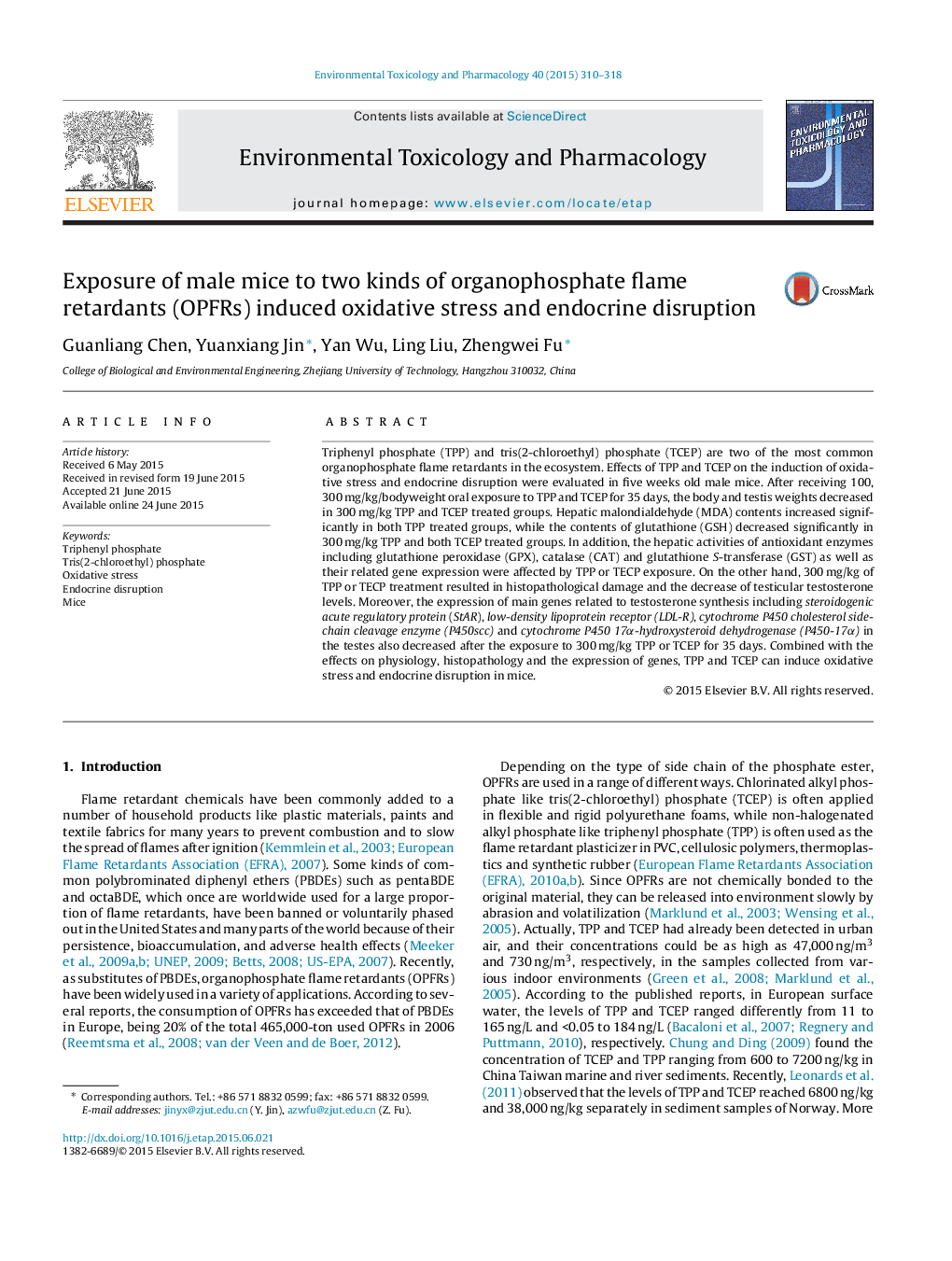| کد مقاله | کد نشریه | سال انتشار | مقاله انگلیسی | نسخه تمام متن |
|---|---|---|---|---|
| 2582975 | 1130676 | 2015 | 9 صفحه PDF | دانلود رایگان |

• Oxidative stress and endocrine disruption of TPP and TCEP in male mice were studied.
• High dose of TPP or TCEP decrease the body, liver and testis weights.
• Hepatic SOD, GPX, CAT, GST activities and their mRNA levels altered by TPP and TCEP treatment.
• TPP and TCEP decrease the mRNA levels of StAR, LDL-R, P450scc, P450-17α and testicular T level.
Triphenyl phosphate (TPP) and tris(2-chloroethyl) phosphate (TCEP) are two of the most common organophosphate flame retardants in the ecosystem. Effects of TPP and TCEP on the induction of oxidative stress and endocrine disruption were evaluated in five weeks old male mice. After receiving 100, 300 mg/kg/bodyweight oral exposure to TPP and TCEP for 35 days, the body and testis weights decreased in 300 mg/kg TPP and TCEP treated groups. Hepatic malondialdehyde (MDA) contents increased significantly in both TPP treated groups, while the contents of glutathione (GSH) decreased significantly in 300 mg/kg TPP and both TCEP treated groups. In addition, the hepatic activities of antioxidant enzymes including glutathione peroxidase (GPX), catalase (CAT) and glutathione S-transferase (GST) as well as their related gene expression were affected by TPP or TECP exposure. On the other hand, 300 mg/kg of TPP or TECP treatment resulted in histopathological damage and the decrease of testicular testosterone levels. Moreover, the expression of main genes related to testosterone synthesis including steroidogenic acute regulatory protein (StAR), low-density lipoprotein receptor (LDL-R), cytochrome P450 cholesterol side-chain cleavage enzyme (P450scc) and cytochrome P450 17α-hydroxysteroid dehydrogenase (P450-17α) in the testes also decreased after the exposure to 300 mg/kg TPP or TCEP for 35 days. Combined with the effects on physiology, histopathology and the expression of genes, TPP and TCEP can induce oxidative stress and endocrine disruption in mice.
Journal: Environmental Toxicology and Pharmacology - Volume 40, Issue 1, July 2015, Pages 310–318